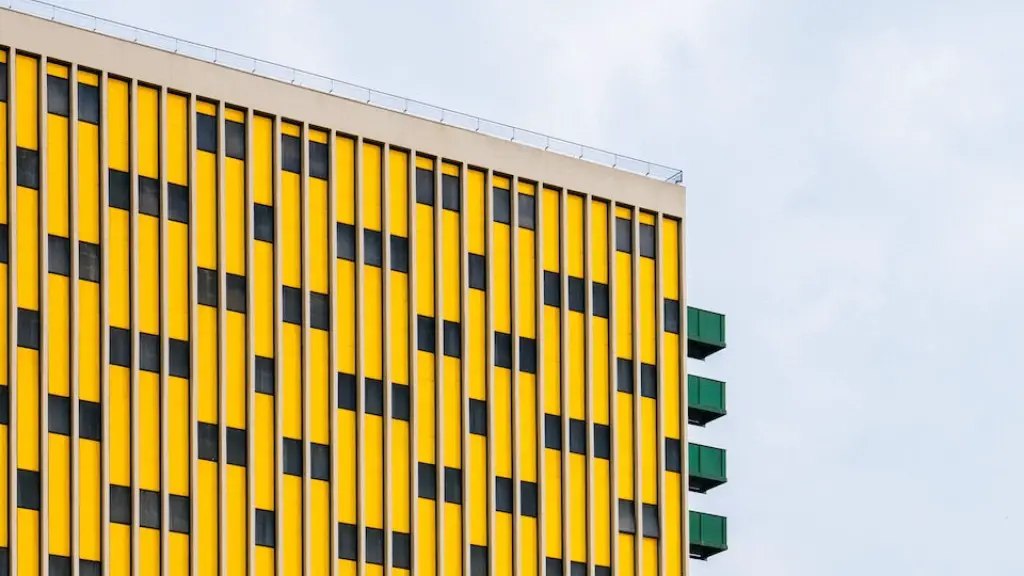How Do Social Categories Shape Architecture
Architecture is a reflection of society, creating an environment that is experienced differently by people of different social and economic backgrounds. It not only sets the stage for interactions between people, but also for their well-being.
In some ways, architecture is more than just a shelter, it also reflects culture and conveys emotions through its design. Architects often design buildings that rely on the traditional tastes, values and beliefs of the people they are designing for. Social categories such as race, gender and class may affect how architectures shape is determined.
People of different social categories react differently to architecture. Those of a higher social category may prefer designs that are luxurious and more elaborate, while those of a lower social category may favour more economical structures. This is especially true when it comes to housing projects. People with different levels of income may require different types of houses such as single family homes, apartment buildings or townhomes.
There are some groups who are marginalized or excluded from the architecture process. These include people with disabilities or those from minority backgrounds. In some cases, architects may design buildings that are not accommodating towards these particular groups, resulting in their exclusion from certain properties or services.
Architecture is often used to signify power and status. In some cultures, the design of buildings is determined by the social hierarchy, with those of higher social categories enjoying larger, more luxurious structures while those in lower categories are left with less desirable buildings.
Architecture can often be seen as a symbol of oppression but also of progress. Buildings can either be designed to reflect a country’s more modern progressive strides, or they can be designed to signify an oppressive regime and curtail the freedoms of its people.
No matter the social category, architecture is an important part of our lives. It shapes how we interact, how we feel and how we experience our environments. Architects are continually striving to create a better world through their designs, and it is important to consider the impacts of social categories when designing or evaluating buildings in order to create equitable access to buildings for all.
Economic Aspects
The economic aspect of social categories and architecture can be seen in the cost of constructing buildings for certain classes of people. People who may have a higher social status may have access to more financial resources for construction and design, allowing for more elaborate and luxurious architecture. While those in lower or marginalised economic groups may face financial limitations.
It is widely accepted that the cost of building materials, design, and labour is higher in higher social categories while lower social categories often have access to more affordable materials, leading to simpler and more humble structures. Low-income housing projects are often designed with a minimalistic approach in order to save on costs and reduce construction expenses.
In addition, the cost of housing and rental space is often seen to be higher in wealthier areas and lower in poorer areas. This difference in cost can be seen as a reflection of the economic status of the area. This often has the effect of excluding some social categories from wealthier areas, and can even limit access to services or facilities.
The effect of economic aspects of social categories and architecture on society is multifaceted. On one hand, it can create more equitable access to housing and services for certain social categories, but on the other hand, it may create socio-economic disparities that can have lasting consequences for communities.
Cultural Aspects
The cultural aspect of the role of social categories in architecture is often overlooked yet still very important. Different cultures often have their own unique designs and aesthetics for architecture, even within similar social categories. In some cultures, architecture can be a representation of cultural pride and heritage, while in others it can be a symbol of power and domination.
It is important to consider the cultural aspect of architecture when designing buildings. Architects must be mindful that there may be different interpretations of their designs, and should strive to create structures that incorporate the culture of the people they are designing for while still being respectful and accommodating to all.
For example, when designing a religious building, the architect must consider the beliefs and values of the people it is designed for, and create a design that reflects those values while still being accessible to all religious backgrounds. The same goes for designing for a cultural event or landmark.
The cultural aspect of social categories and architecture must be taken into consideration when creating or reforming structures. Architects must think carefully about the implications of their designs, and consider the impact it may have on the social and cultural environment of the people they design for.
Political Aspects
Political aspects are often seen in architecture as well. Governments often commission buildings that reflect their power and authority. These structures can be designed to intimidate its citizens or to represent progress and modernity.
For example, some countries might be more authoritarian and have a stricter control over their citizens and therefore make the architecture of their buildings reflect that. Whereas democracies might be more progressive and have less control over the architecture of their buildings.
Architecture can be used as a tool of oppression when it is used to segregate groups of people based on their social categories. There have been instances in history such as the Berlin Wall or the Great Wall of China, where certain social categories have been excluded from certain areas for political reasons.
The political aspect of architecture is an important one to consider. Architects must take into account the implications their designs may have on the political landscape, and strive to create buildings that are inclusive and respectful of the society they are designing for.
Environmental Aspects
The environmental aspect of architecture is also important to consider. Buildings often incorporate different environmental elements such as insulation and ventilation to reduce energy consumption and increase comfort.
In some cases, buildings may also be designed to fit the needs of people of different social categories. For instance, people with disabilities may need certain features in order to use the building, such as wheelchair ramps or audio-visual systems. Architects must take into consideration these needs in order to create an environment that is comfortable and accessible for all.
The environmental aspect of architecture can also be seen in the use of materials and the choice of green solutions. The use of certain materials can reduce the impact of a building on the environment, for instance the use of recycled materials or locally sourced materials. Architects should strive to incorporate these solutions into their designs in order to reduce the overall impact of the building on its surroundings.
Overall, the environmental aspect of architecture is an important one, as it has an impact on how we interact with the environment, and how we can improve our living spaces in order to reduce our environmental impact.





